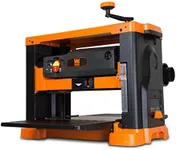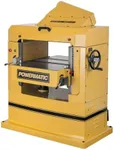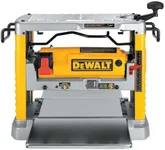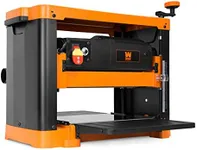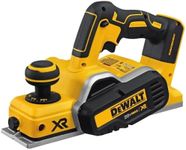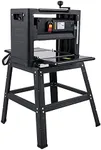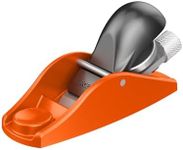Buying Guide for the Best Industrial Wood Planers
Choosing the right industrial wood planer is crucial for ensuring smooth and precise woodwork. A wood planer is a tool used to create flat surfaces and uniform thickness on pieces of wood. When selecting an industrial wood planer, it's important to consider several key specifications to ensure it meets your specific needs and the demands of your projects. Understanding these specifications will help you make an informed decision and invest in a planer that will serve you well for years to come.Cutting WidthCutting width refers to the maximum width of wood that the planer can handle in a single pass. This is important because it determines the size of the wood pieces you can work with. Planers with a cutting width of 12-15 inches are suitable for smaller projects and hobbyists, while those with a cutting width of 20 inches or more are ideal for larger, industrial-scale projects. Choose a cutting width based on the typical size of the wood pieces you plan to work with.
Cutting DepthCutting depth indicates how much material the planer can remove in a single pass. This is crucial for efficiency and achieving the desired thickness quickly. Planers with a cutting depth of 1/8 inch are suitable for light-duty tasks, while those with a cutting depth of 1/4 inch or more are better for heavy-duty, industrial applications. Consider the thickness of the wood you typically work with and how quickly you need to achieve the desired thickness.
Motor PowerMotor power, measured in horsepower (HP), determines the planer's ability to handle tough materials and continuous use. A motor with 1-2 HP is adequate for light to medium-duty tasks, while motors with 3 HP or more are necessary for heavy-duty, industrial use. Choose a motor power that matches the intensity and frequency of your woodworking projects.
Feed RateFeed rate is the speed at which the wood is fed through the planer, usually measured in feet per minute (FPM). A higher feed rate allows for faster processing of wood, which is beneficial for large-scale production. However, a slower feed rate can provide a smoother finish. Planers with adjustable feed rates offer the best of both worlds, allowing you to choose the appropriate speed for your specific project needs.
Number of BladesThe number of blades in a planer affects the smoothness and quality of the finish. Planers typically have 2 to 4 blades. More blades generally result in a smoother finish and faster material removal. For fine woodworking and high-quality finishes, a planer with 3 or 4 blades is ideal. For general-purpose use, 2 blades may suffice.
Dust CollectionDust collection is an important feature for maintaining a clean and safe work environment. Planers with built-in dust collection systems or ports for connecting to external dust collectors help manage wood shavings and dust. This is especially important in industrial settings where large volumes of wood are processed. Choose a planer with an efficient dust collection system to keep your workspace clean and reduce health hazards.
Table Size and SupportThe size and support of the planer's table affect the stability and ease of handling large wood pieces. A larger table provides better support for bigger projects, reducing the risk of snipe (uneven cuts at the ends of the wood). Look for planers with sturdy, adjustable tables and additional support extensions if you frequently work with long or wide pieces of wood.
